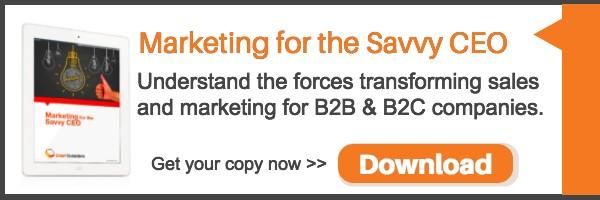CEO Blog - Advice for CEOs on growth and scaling
Business Strategy, Digital Strategy, and "The Road Not Taken" by Robert Frost


Many of you probably read Robert Frost’s “The Road Not Taken” somewhere in your educational career. It’s a short poem of four stanzas and 20 lines total. For a poem so brief, it’s surprising that Frost’s famous work is so powerful yet often misinterpreted. If you can’t recall the poem, or want to read one commentary, you can do a refresh here.
Frost wasn’t merely observing the fact that he had choices as to which path would get him to where he wanted to go, he intended to teach a life lesson. Paths and forks in the road have been called ancient metaphors for life. A close reading of the poem should lead you to conclude that both roads are traveled equally and that both provide a way forward. Perhaps one takeaway from the poem is to pick a path and move on!
Is there a better road to a strong, healthy organizational strategy? Is it a digital road? Is your business ready to act assertively, pick a path, and move on? Let’s look at three possible strategic paths.
Business Paths and Digital Paths
Most businesses today have options for how to approach strategic development:
- Business focus, no digital components
- Business focus with strong embedded digital components
- “Digital-first” strategy
Digital components are represented by digital marketing, digital go-to-market programs, digitally-delivered products or services, and digital operations. All four components have the potential to accelerate your business growth, improve your competitive positioning, and drive new financial benefits.

A conversation about which digital components are a good fit with your business goes well beyond this brief blog. My focus is on which approach to strategy should you consider, and why.
When should a digital path be embedded in your business strategy?
You may be surprised that many businesses, especially with a B2B focus, are still nascent users of digital technologies today. As digital technologies permeate our personal lives, we tend to expect that all businesses must have strong digital component in their operating models.
What business conditions should cause you to think more aggressively about embedding a digital component in your business strategy?
Let’s identify these leading indicators:
- Flat or decreasing revenues
- Challenges maintaining profitability
- Loss of competitive advantage and/or new competitive entrants
- Labor availability
- High customer or client churn evidenced by low customer satisfaction and loyalty scores
Leading indicators are like sign posts alerting you to the need to start doing something different. These indicators don’t mean your hair is on fire, but they should alert you to the need to evaluate the opportunities to include a digital component in your strategy. What you should expect from including a digital component in your strategy is improved pace of your business, richer products and services, improved customer experiences, and increased operational efficiencies.
When should a digital-first approach drive your strategy?
Today you can read discussions about “digital-first,” or possibly “mobile-first.” These terms are usually applied to creating a customer interface starting with a digital device, versus adding a digital interface to more traditional interfaces. Proponents of this approach are preaching a technology gospel of transformation. A digital-first approach recognizes that a digital interface is the priority interface for your customers.
Expanding the concept, a digital-first strategy prioritizes digital investments and encourages digitization of processes. It recognizes the need for more radical adoption of digital technologies than just embedding them in your business strategy.
What business conditions would cause you to take a digital-first approach to strategy?
- If you are a start-up or are starting a new line of business and you can start with new digitally-enabled processes and offerings
- Your current business operations are inefficient and the capital required to improve them appears to be significant
- You are struggling to bring your workforce along, and you can’t wait much longer for them to get on board
- You are getting eaten alive by new more nimble and agile competitors
- Most of your business, operational and financial indicators are heading in the wrong direction.
Can you delay considering a digital component in your strategic plan? Digital technologies can be strategic growth accelerators, but you should approach them with a focus, a plan, a roadmap and investment and benefit expectations.
One interpretation of Frost’s poem reinforces my advice to businesses needing a digital strategy—which is, no matter the path you take, its vitally important to develop your next strategy now. Which path will you choose as you undertake development of your next strategy?
This article is part of a series where I share practical experience learned over 25 years as a Marketing executive. I’m happy to engage with you if you have another view, or want to expand on these ideas—especially if you have a need, or know a company that does.
Topics: Business Planning, Digital Marketing
Thu, Mar 16, 2017- Press Releases
- Careers
- Case Studies
- Marketing Consultant Company
- Marketing Strategy Consultants
- Marketing Plan Consultants
- B2B Marketing Consultants
- Virtual CMO
- Marketing Consultant Outsourcing
- Fractional CMO
- What is a Fractional CMO
- Healthcare Marketing Consultant
- Marketing Consultant Houston TX Texas
- Marketing Consultant Texas TX
- Marketing Consultant Bay Area
- CEO Blog
- Ebooks Plus
- Executive Marketing Consultants
- Product Marketing Consultants
- B2C Marketing Consultants
- Virtual Marketing Consultants
- Senior Marketing Consultants
- Temporary CMO
- Hire a CMO
- Fractional CMO Salary
- Fractional CMO Responsibilities
- Marketing Consultant Austin TX Texas
- Marketing Consultant Dallas TX Texas
- Marketing Consultant San Antonio
- Helping Private Equity
- Private Equity Blog
- Leadership Team
- Privacy Policy
- Business Marketing Consultants
- Strategic Marketing Consultants
- Marketing Technology Consultants
- Sales and Marketing Consultants
- CMO Job Description
- CMO Salary
- Fractional CMO Agency
- Fractional CMO Services
- CPG Marketing Consultant
- Marketing Consultant San Diego
- Partners
Houston, TX 77056
© 2023 Chief Outsiders



